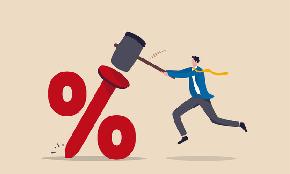Green buildings may not save as much in operating costs for their builders and managers as originally thought, but increased productivity will compel tenant demand for sustainability, according to the speakers at “Do Green Buildings Make Dollars and Sense,” a discussion of the results of a survey of CB Richard Ellis office tenants.
While operating costs roughly were the same as non-sustainable buildings at $10 per square foot to $12 per square foot, occupancy was significantly higher–3.5%–in green buildings. In addition, tenants realize significant productivity gains–and landlords see higher rents, the survey said.
“We were surprised that operating expenses weren’t lower. We’ve been touting that. But what also is surprising is how impactful the productivity is,” said David Pogue, national director of sustainability for Los Angeles-based CBRE. “We didn’t get the economic benefit we thought we would–but we did get it on the tenant side.”
Some 45.5% of survey respondents reported fewer sick days, with 55% reporting that productivity improved an average of 4.88%. In fact, reduced sick days and higher productivity boosted green office tenants’ bottom lines by $25 per square foot, said tenants at CBRE’s sustainable buildings.
“Productivity is an elusive beast to try to study,” Pogue said. The survey is the latest step in a process that began in 2006.
“We recognized as the worlds largest real estate company we felt we had an obligation,” Pogue said. “We decided that we ourselves would be carbon neutral by 2010.”
Since then, the company has partnered with various green firms and organizations, including the EPA Energy Star program, the US Green Building Council and BOMA, created internal programs to improve efficiency and worked with tenants, leading to the survey. Working with the University of San Diego’s Burnham-Moores Center for Real Estate, the company queried tenants at its LEED and Energy Star buildings about the results of their efforts. The buildings varied in size and class, as well as age.
Surprisingly, the most influential factor in saving energy was giving tenants control of their own meter. Tenants at individually metered buildings saw costs 21% lower than those in a pool situation.
Still, landlords and building managers do see some bottom-line benefit from sustainability: Rents in CBRE’s green buildings were 13% higher–$30.54 per square foot versus $27 per square foot for the average market rent–giving landlords some motivation to pursue green building. But perhaps the greatest motivation is that tenants will want sustainable space, either for monetary or image reasons. Seventy-one percent of respondents said that sustainability would be important in lease renegotiations.
But with corporate headquarters–70% said that committing to green office space improved their shareholder image, but only 23% shared their green office space information with clients. “There’s often a disconnect between a board’s decision and how they communicate it,” Pogue said.
Europe, meanwhile, has its own problems, noted Charlotte Eddington, head of sustainability for CBRE in Europe, the Middle East and Africa, where the focus is on constructing sustainable buildings. Going green adds approximately 2% to 3% to construction costs for a basic certification–BRE Environmental Assessment Method or LEED–while higher levels of sustainability can increases costs by 5% to 7%.
“There is no single definition of a green building,” Eddington said. “And there are different methodologies of calculating carbon. Occupiers don’t see the savings as worth paying more for [it], in our experience.”
Adding to the confusion is the greater incidence of all-inclusive rents in the United Kingdom, leaving tenants uncertain of just how much they may be saving. “This is an ongoing debate in Europe,” Eddington said. “Getting more information is important. The evidence is encouraging, but there’s a long way to go.”
Even so, the display of an Energy Certificate showing the sustainability of a building is likely to become mandatory in the United Kingdom.
Still, Pogue noted, landlords must be ready to accommodate the board, as many corporations are including a commitment to occupying green offices in their mission statements.
“A very large portion of Fortune 500 companies believe [sustainability] is important,” he said. “State and Federal governments are making it a requirement. Soon, if you want to lease to a government entity or a top 100 company, sustainability is necessary.”





 Copyright © 2024 ALM Global, LLC. All Rights Reserved.
Copyright © 2024 ALM Global, LLC. All Rights Reserved.











